Recent Storm Damage Posts
Springtime Storm Flooding
3/29/2022 (Permalink)
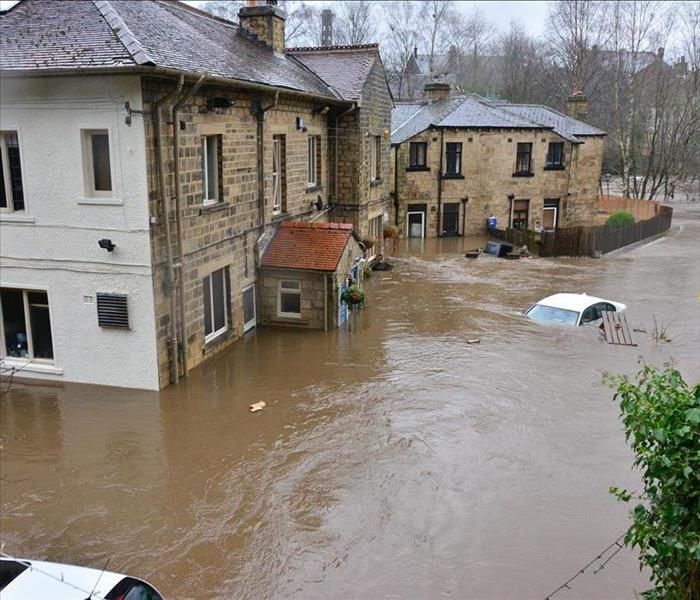 Bingley Floods Boxing Day 2015 River Aire - Ireland Bridge
Bingley Floods Boxing Day 2015 River Aire - Ireland Bridge
Flooding, an overflowing of water that covers or submerges land that is normally dry, is the most common natural disaster in the United States. (Ready.gov/ Samhsa.gov) Although often predicable and planned for alongside “emergency declaration for evacuation, storms and floods can be occasionally unpredictable. Floods happen during heavy rains when the snow melts rapidly when dams or levees break (most notably is the New Orleans levee break killing hundreds and leaving millions homeless). Flooding can even be in relation to other natural disasters such as underwater earthquakes causing tsunamis and hurricanes.
Flash floods are fast-moving waters that are particularly dangerous because of the combination of destructive power and speed. Usually occurred by heavy rainfall exceeding the grounds or drainage system’s ability to absorb the water. Water flows out into streets and sidewalks making driving and walking very dangerous. These flash floods can be significantly damaging to infrastructure. Flooding can cause server damage to residential and commercial properties. Although these events can occur randomly there are ways to prepare and prevent the damaging effects of flooding.
Preventative steps you can take in the case of a flood are unclogging drains and gutters, using sandbags to direct the flow of water, installing a backflow prevention device, and getting a sump pump. A sump pump is a submersible device installed in a sump pit dug at the lowest point of your house such as the basement and used as a sort of drain. installed If your residential or commercial property suffers from flood damage, call your local SERVPRO franchise professionals to help make it “Like it never even happened”
The Deadly Chicago Winter Blizzard of 1967
1/7/2022 (Permalink)
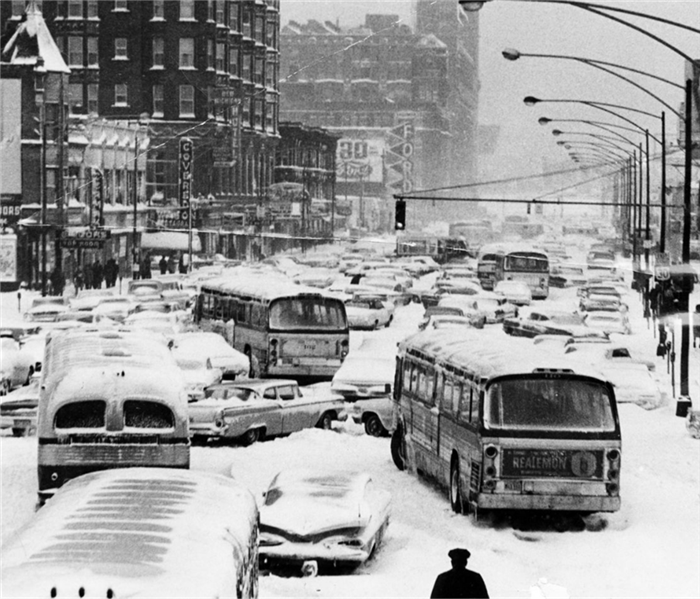 26 people had died and businesses lost an estimated $150 million, about $904 million in today’s currency!!
26 people had died and businesses lost an estimated $150 million, about $904 million in today’s currency!!
Chicago experienced its greatest snowstorm on record on January 26 and 27, 1967. The snow began around 5:02 a.m. on the 26th, and by 10:10 a.m. on the 27th, the city had been crippled by a record 23 inches of snow.
Winds gusted to 53 mph at Midway Airport during the storm. The strong winds generated a lot of blowing and drifting. Drifts of 4 to 6 feet high were found all over the area.
Snow began falling on Thursday morning, January 26th, but many people were able to go to work and school without difficulty. However, by noon, about 8 inches of snow had fallen, and O'Hare Airport had been closed.
Employees and kids have been released early from certain companies and schools. But even for those who got out early, the trip home was a misery. Many workers failed to return home or arrived late. Many people choose to stay at work or in motels. The city had come to a halt by Friday morning.
By the time it stopped snowing, 26 people had died and businesses had lost an estimated $150 million (about $904 million in today’s currency).
When a winter storm warning is issued, there is little or no time to prepare, making it more difficult to ensure safety. Check out the suggestions below for what to do depending on where you are during the alert.
At Home or in a Building:
- Stay inside
- Close off unneeded rooms to save heat
- Stuff towels or rags in cracks underneath doors to conserve heat
- Cover the windows at night
- Eat and drink to prevent dehydration
- Wear layers of loose-fitting, light-weight and warm clothing
If Caught Outside:
- Find a dry shelter immediately
- Cover all exposed body parts
If Caught Outdoors Without Shelter:
- Prepare a lean-to, windbreak, or snow-cave for protection against the wind
- Build a fire for heat and attention purposes
- Place rocks around the fire to absorb and reflect the heat
- Do not eat snow straight off the ground, melt it first.
If Stranded in a Vehicle:
- Stay inside your vehicle
- Run the motor for ten minutes each hour
- Crack the windows to avoid carbon monoxide poisoning
- Make sure the exhaust pipe is not blocked
- Tie a colored cloth to your antenna or door
- Raise the hood after the snow stops falling
- Exercise to keep warm and keep your blood flowing
Be Prepared for the Next Winter Storm With These Tips!
1/5/2022 (Permalink)
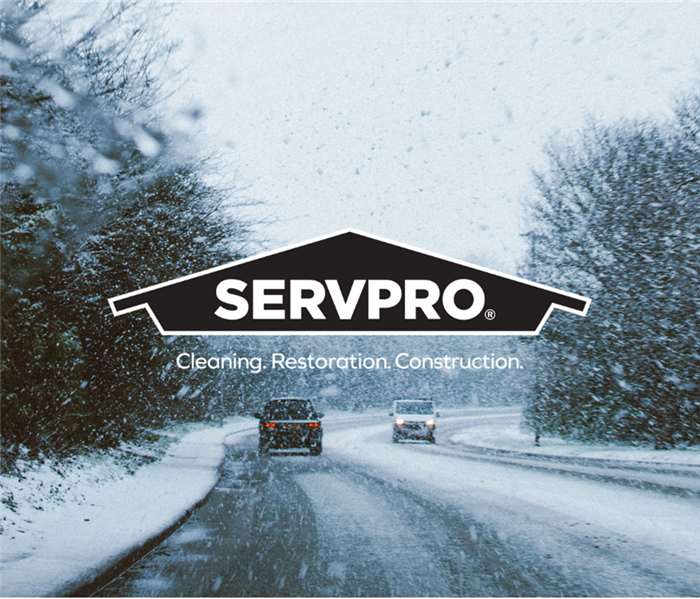 Before the next winter storm arrives, get your car's antifreeze levels, battery, ignition system, exhaust system, heater, lights, and oil checked.
Before the next winter storm arrives, get your car's antifreeze levels, battery, ignition system, exhaust system, heater, lights, and oil checked.
Winter storms can bring not only a lot of snow, but also bitterly cold temperatures, strong gusts, freezing rain, and ice. They can bring down trees, make roads and pathways extremely unsafe, and produce power outages that linger for days. Schools and daycare facilities may be closed as a result of the disruption to public transit. Winter storms also increase the likelihood of car accidents, hypothermia, frostbite, carbon monoxide poisoning, and heart attacks.
That's why, with winter storm season in full swing, knowing how to protect yourself, your family, and your house safe is essential.
Here are some things you can do now to prepare for the impending storm.
1. Make sure you have enough food in your pantry.
Because it's critical to stay indoors and avoid traveling during a winter storm, making sure you're well-stocked on food is critical. Many non-perishable things should be in your pantry so that you don't have to worry about anything deteriorating if you lose electricity. Ideally, you should have enough food to last at least three days.
2. Buy Bottled Water
Make sure you have plenty of bottled water on hand in case your pipes freeze and you can't get water from the tap. You may also require water for brushing your teeth, cleaning dishes, flushing toilets, or bathing if your pipes freeze. You can also prepare ahead of time by filling the bathtub, jugs, bottles, and other containers with water.
3. Get your prescriptions filled and hygiene items picked up
Make sure all of your prescription drug prescriptions are filled so that you have enough on hand to last at least three days, if not a week. This eliminates the need to rush to the pharmacy when the roads are poor.
You should also stock up on any hygiene products you may require, like as diapers, toilet paper, tampons, and toothpaste. Picking up moist toilet paper can also be beneficial if water is scarce.
4. Check your tools and stock up on ice melt.
Ice melt salt sells out quickly in local stores just before a storm, so start buying up early to ensure you have enough for after the storm. You'll need enough to shovel and salt all of your outside stairs, stoops, and walkways immediately following the storm, before the snow melts and turns to ice as the temperature drops.
Before the storm hits, make sure you have a good snow shovel (or two). Make sure they aren't too worn or cracked, as this will only complicate your life. You'll also want to make sure your tool kit is up to date and simple to locate, since you may need a wrench or pliers to quickly turn off utilities.
5. Be Prepared For A Power Outage
Charge your cell phones in advance of the storm, and have some portable battery backups available in case the power goes out. It's also a good idea to keep flashlights or battery-powered lights around the house so you don't have to waste time looking for them.
If you live in a region where power outages are common, you should consider purchasing a generator, either a portable or a standby one for your home. If you have a portable generator, make sure you have enough gasoline or propane before the storm to operate it whenever and for as long as you need it. Always use portable models outside, away from windows, and never use them indoors or in confined locations like garages, crawl spaces, or basements.
6. Take Care of Your Water Pipes
Allow cold water to flow from faucets supplied by exposed pipes to help prevent frozen pipes. Running water, even at a trickle, is less likely to freeze. Allow warm air to circulate near plumbing by opening cabinet doors in the kitchen and bathroom. Pipe insulation should be added to any pipes that are prone to freezing. Maintain a temperature of no less than 55 degrees Fahrenheit inside your home.
7. Make sure your windows and doors are well-sealed.
Drafty windows and doors let chilly air in while letting warm air out. That's why it's a good idea to use an insulation kit from any hardware shop to seal any windows. Weatherstripping can also be purchased at the store to improve the seal on your front door.
Insulated blinds are also available to help keep the warm air inside the house.
8. Inspect and replace smoke and carbon monoxide detectors if necessary.
Make that your smoke and carbon monoxide alarms are still operational. It's advisable to replace them with detectors that work during a power outage if they aren't already battery-powered or battery-backed to keep your family safe.
9. Get Your Backyard Ready
Take a trip around your yard before the storm to check for any tree limbs that could fall on your house. If you have the ability, you should prune those back to prevent them from causing damage to your property during the storm – or hire someone to do it for you.
If any tree branches are near power lines, you should get them trimmed or chopped back by a professional or the utility to assist reduce the danger of a power outage.
Mulch your gardens, if you haven't already, to protect plants that you don't want to freeze.
10. Get Your Car Ready
Before the next winter storm arrives, get your car's antifreeze levels, battery, ignition system, exhaust system, heater, lights, and oil checked.
Then, in case you're trapped in your automobile due to the blizzard, prepare your car with items you might require. Blankets, water, chains, jumper cables, ice scrapers, maps, bottle water, warm clothing, non-perishable snacks, and a first-aid kit should all be in your car. It's also a good idea to have some sand or kitty litter on hand in case you get stranded in the snow or ice.
11. Keep yourself up to date
Listen to your NOAA weather radio for hazardous weather alerts and warnings. Always keep an eye on the weather forecast, whether it's on the internet or on your phone. Sign up for emergency alerts and updates in your area.
In the event of an emergency, know how to cut off your utilities, such as gas lines.
Before the storm strikes, do some research on nearby shelters and warming centers, and establish a plan for where to go and how to get there if you need to leave your house in an emergency.
Also, be aware of the symptoms of hypothermia and frostbite, and be prepared to check on your neighbors, particularly if they are elderly or have young children who are more vulnerable to the cold.
How to Stay Safe During a Wind Storm!!
11/1/2021 (Permalink)
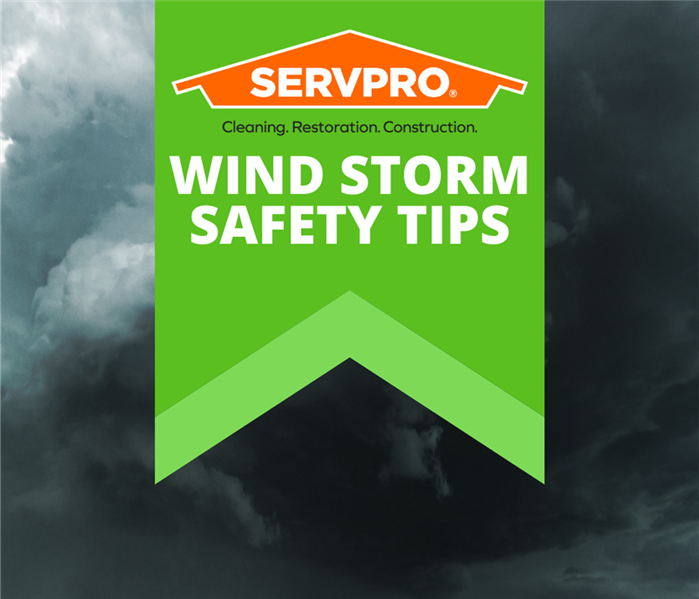 Wind Storm Safety Tips
Wind Storm Safety Tips
Winds can reach speeds of more than 100 miles per hour during extreme weather events such as tornadoes!
High winds of any speed, on the other hand, can cause damage to homes and property, as well as flying debris and shattered glass, which can cause injuries. A disaster preparedness plan for your family, including a disaster survival kit and an emergency evacuation plan, can save your family from injury and inconveniences.
Keep yourself updated!
Weather updates and advisories will be broadcast on the radio and television. Having the most up-to-date information is critical to keeping safe during a weather event. For updates, utilize an NOAA Weather Radio or battery-powered radio, and keep an eye out for mobile alerts.
A high wind alert indicates that persistent winds of more than 25 mph are expected.
Warnings for thunderstorms and tornadoes should be taken seriously since they indicate that severe weather has been detected and is on its way.
During bad weather, seek cover!
- Remove yourself from windows and glass doors and into the center of your house or basement. Take refuge under a stairwell or a large piece of furniture.
- During heavy winds, do not stay in a mobile home. High winds can easily topple them, and flying debris can penetrate their light frames and exteriors.
- Make a safe room for yourself. If you live in a location where violent winds are common, you should consider constructing a safe room in your home.
Protect your home against extreme weather and wind events with these helpful tips!
- Vehicles that you want to leave behind should be parked or stored in a garage. If you don't have a garage, relocate your belongings to higher ground in the event of flooding.
- Garbage cans, patio furniture, barbecues, and other potentially wind-borne items should all be kept inside your house or garage.
- Close the doors and windows to your home. In the event of severe winds, board up windows and glass doors with shutters or plywood to prevent harm from broken glass.
- Secure your outdoor pool and turn it off. To avoid damage, turn off the circuit breaker for your outdoor pool and remove the engine.
- Tree branches that pose a danger should be removed. Pruning branches that may break off during a storm and injure someone or cause damage to your home or vehicles is a good idea.
- A generator can be rented or purchased. A generator can assist keep refrigerators, freezers, and lights running if you can rent or buy one. A severe storm can knock out power for days, if not weeks, at your home.
- Keep an ear out for weather updates on the radio. If you are told to evacuate, follow local officials' instructions and head to a shelter.
- Let your friends and family know where you'll be.
If you don't have time to get to a shelter, go to your safe room if you have one. Otherwise, stay in the center of your house or basement, away from windows, and hide under a stairwell or a large piece of furniture.
When storms or floods hit Elmhurst, SERVPRO is ready!
9/27/2021 (Permalink)
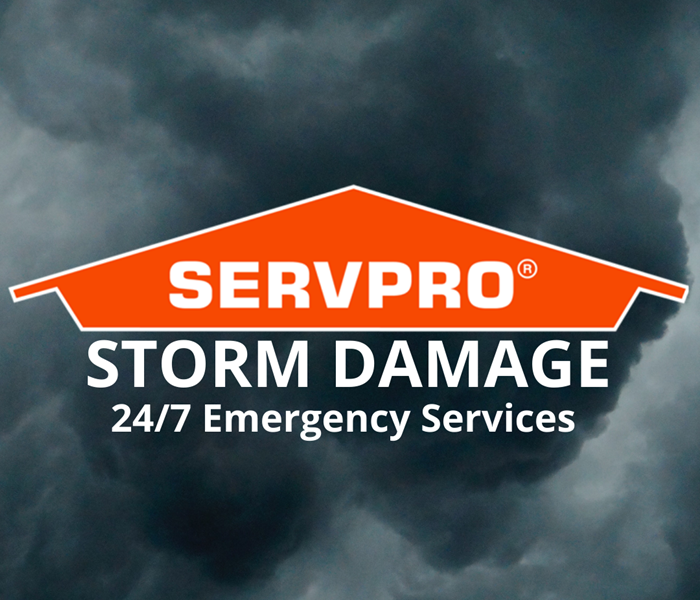 24/7 Storm Damage Emergency Service
24/7 Storm Damage Emergency Service
The effects of a storm or a flood can be catastrophic! You need to act quickly, and you need a professional that has experience with storm damage. SERVPRO Elmhurst Professionals have the training, equipment, and resources to manage any major disaster and can respond quickly to storm and flooding situations.
What do we provide?
- 24 hour Emergency Service
- Highly Trained Water Damage Specialists
- Resources to Handle Storms and Disasters
Regardless of the Storm Damage, We Can Help!
SERVPRO of Elmhurst can handle any size disaster, regardless of the type of storm. Our Disaster Recovery Team can respond rapidly with additional resources during major storms and disasters.
- Flooding caused by heavy rains
- Tornadoes and wind damage
- Ice and snowstorms
Have storm or flood damage? Call us today! (630) 758-1701
Sewer back up from a recent storm
9/18/2021 (Permalink)
If you're worried about sewage backup in your, Elmhurst, IL, home then you may be wondering what mitigation steps you can take to keep your property safe. Here are three things you can do to help protect your residence against potential sewer problems after a heavy storm.
1. Know The Risk in Your Area
When preparing your home against storm damage, it's important to know the risk level of your property. Keep track of storms in the area, know where your property is situated on the local watershed, and have an idea of the likelihood of sewer issues in your area. These things will help you have an idea of what the best mitigation measures are for your home.
2. Take Precautions Before a Storm Arrives
Before backup flooding occurs, there are some steps you can take. You may want to have a floor drain plug or standpipe installed in basement areas, or consider the installation of a sump pump. It's also a good idea to have your sewage system inspected regularly to ensure that everything is functioning correctly before an issue arises.
3. Be Prepared for a Cleanup
Even with the best precautions it's still possible for sewer damage to occur to you home. As such you may want to have a plan in place to take care of any sewer cleaning up that may be required. Have the number for a restoration service on hand, know where the water turn off valve and your electric box are located in your home so that these can be shut down in the event of an emergency, and have access to proper safety gear such as goggles and gloves.
When preparing your home against sewer backup it's important to know what the risk factor of your area is. Knowing this can allow you to take the proper precautions before a storm even occurs. You may also want to have a plan prepared in case these precautions can't protect your property 100 percent. If you have any questions your local restoration team may be able to help.
Hurricane Season 2021
9/13/2021 (Permalink)
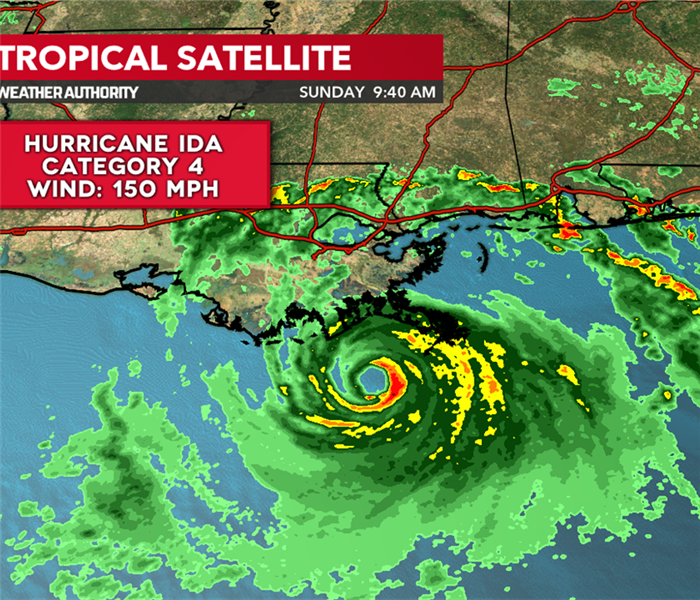 Have a plan and be prepared!
Have a plan and be prepared!
Hurricane season is upon us! Experts say that the hurricane season starts in May and lasts all the way until November on average. Each year is different. However, as on Friday September 10th, it has officially marked its peak of hurricane season for the Atlantic Basin. We have seen during this year there has been 13 named storms, and 5 of those reached a hurricane status and 3 of which became major hurricanes. Here is a list of the 13 hurricanes so far..
1. Ana: Formed near Bermuda on May 22nd
2. Bill: Formed off the East Coast on June 14th
3. Claudette: Formed in the northern Gulf of Mexico June 19th
4. Danny: Formed along the East Coast near Charleston, South Carolina on June 28th
5. Elsa: Formed in the central tropical Atlantic on July 1st
6. Fred: Formed in the eastern Caribbean on August 10th
7. Grace: Formed in the central tropical Atlantic on August 14th
8. Henri: Formed near Bermuda on August 16th
9. Ida: Formed south of Jamaica in the Caribbean on August 26th
10. Julian: Formed far out in the Atlantic on August 29th
11. Kate: Formed in the central, open Atlantic on August 30th
12. Larry: Formed in the far eastern Atlantic on September 1st
13. Mindy: Formed in the northeaster Gulf of Mexico on September 8th
With the knowledge of knowing we have officially hit the peak of hurricane season, here are some tips on how to be prepared for a hurricane in your area.
- Make a plan: If evacuation is necessary, turn off all utilities and follow community disaster preparedness plans. Make sure you select a common meeting place for all family members. Also make sure you have an evacuation plan for your pets.
- Secure the exterior: Trim any large trees and shrubs. Bring in all outside patio furniture, potted plants, bikes and toys inside.
- Install storm shutters: These will protect your windows, doors and skylights with appropriate shutters or impact-resistant glass.
- Check wall hangings and art: Make sure all wall hangings are secure and take notes about your art collection and any existing damage.
- Move your cars: Keep your cars to higher ground or park them in your garage against the garage doors.
- Power up: Fill up your car's gas tank, make sure all cell phones are fully charged, test your generator and always have plenty of fuel ready in case the power goes out.
- Store important documents: Make sure to keep important documents, such as legal papers, birth certificates, marriage license, insurance policy information, and any valuables in a safety deposit box in the closet of your home.
- Prep an emergency kit: You will need to gather any flashlights, portable radio, batteries, non-perishable food, bottled water, cash, blankets, toiletries and clothing.
- Identify a shelter room: This area should be on the first floor in the central part of the house that has no windows.
We here at SERVPRO understand that when disaster strikes, you don't know what will be left from the aftermath. We are always here to help with any mitigation or reconstruction services you may need!
Winter Storms
1/7/2021 (Permalink)
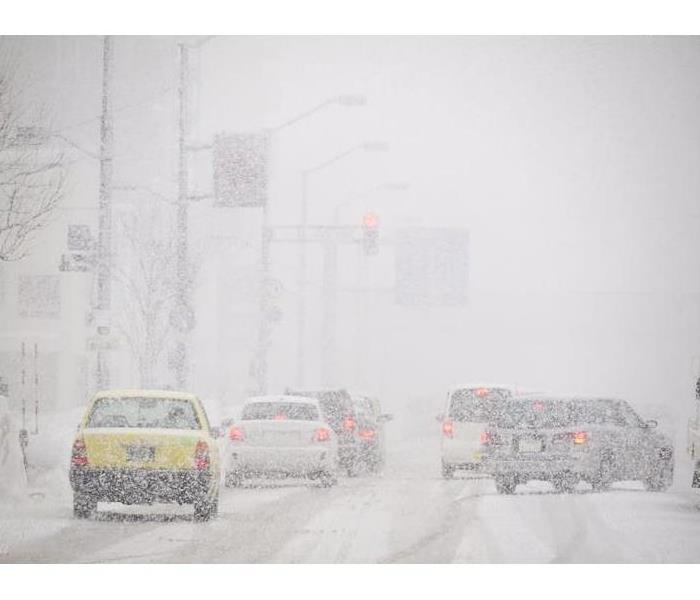 Be prepared!
Be prepared!
Protecting your home is vital in the winter months. A frozen water pipe can burst and flood your house. An ice dam in your gutter can cause water to seep into and saturate an interior walls of your home. Here is a list from Nationwide insurance that they advise their homeowners on during the winter months to prepare their homes for the cold.
- Clean out the gutters, disconnect and drain all outside hoses. If possible, shut off outside water valves.
- Insulate walls and attics, and caulk and weather-strip doors and windows.
- Repair roof leaks and remove tree branches that could get weighed down with ice or snow and fall on your house – or your neighbor's. (Avoid liability for the latter.)
- Wrap water pipes in your basement or crawl spaces with insulation sleeves to slow heat transfer.
- Consider an insulated blanket for your hot water heater.
- If you have a fireplace, keep the flue closed when you're not using it.
- Have a contractor check your roof to see if it would sustain the weight of a heavy snowfall.
- Make sure your furniture isn't blocking your home’s heating vents.
- During cold spells, keep cabinet doors open to allow warm air to circulate around pipes, particularly those in the kitchen and bathrooms.
- Keep a slow trickle of water flowing through faucets connected to pipes that run through unheated or unprotected spaces.
- If your house will be unattended during cold periods, consider draining the water system.
- Avoid ice dams– where water from melted snow refreezes in the gutters and seeps in under the roof, soaking interior walls. Here’s how:
- Ventilate your attic.
- Insulate the attic floor well to minimize the amount of heat rising through the attic from within the house.
- Consider having a water-repellent membrane installed under your roof covering.
If you do find that you have damage to your home, the Insurance Information Institute has published some tips on what to do in the case of a winter storm and managing the damage to your home.
- Take pictures of the damage immediately. If you have "before" pictures, that's even better. Those pictures will help ensure that your insurer cannot claim that the problem was preexisting.
- Make temporary repairs to keep the damage from getting worse but hold on to all of your receipts.
- Don't make pricey repairs before the insurance adjuster arrives.
- Don't assume something is not covered. Take out your policy. Most weather-related damage like burst pipes, a collapsed roof and ice dams are covered.
- Call a reputable company to come and help with any damages to your home. Choose a company that will work with your insurance company.
SERVPRO of Elmhurst is here to help in your time of need for all your winter storm damage needs. Give us a call at 630-758-1701. We work with your insurance companies to make it “Like it never even happened.”
What can happen after an snow/ice storm
1/5/2021 (Permalink)
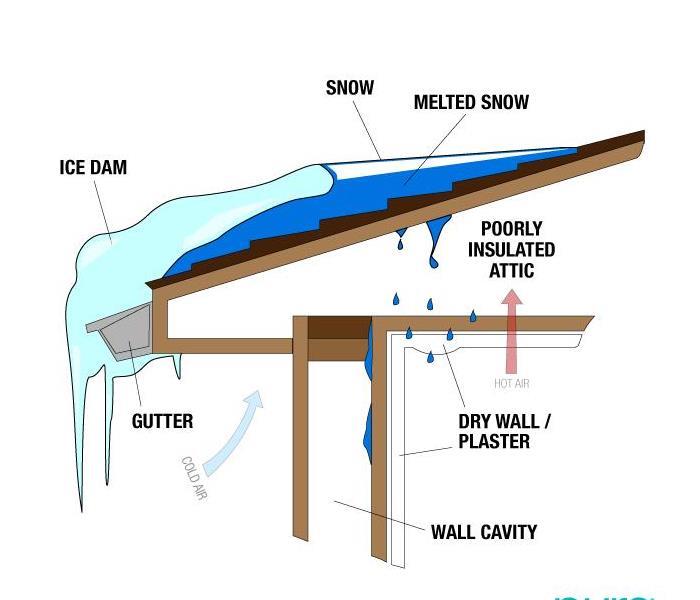 Be aware!
Be aware!
When looking at roofs this winter, icicles hanging along them may look beautiful but can be very dangerous. This is because the icicles forming and snow on the roof can lead to ice dams. This is thick ridges of solid ice that build up along the eaves. Dams can tear off gutters, loosen shingles, and cause water to back up and pour into the building or home. In result, this can lead to peeling paint, warped floors, stained and sagging ceilings. Also, soggy insulation in the attic, which loses R-value and becomes a magnet for mold and mildew.
Here are some ways in order to prevent ice dams. The first is to use heated cables. Attach these with clips along the roof's edge in a zigzag pattern, and the heated cables help prevent ice dams that lift shingles and cause leaks. This solution allows you to equalize your roof's temperature by heating it from the outside instead of blowing in cold air from the inside.
Next is to blow in cold air. Hacking away at ice dams with a hammer, chisel, or shovel is BAD for your roof. Also, throwing salt on them will do more harm to your plantings than the ice. Therefore, take a box fan into the attic and aim it at the underside of the roof where water is actively leaking in. This targeted dose of cold air will freeze the water in its tracks.
You can also rake it by pulling off snow with a long-handled aluminum roof rake while you stand safely on the ground. A rake with wheels will instantly change the exterior temperature of your roof without damaging shingles.
De-icing methods deal with diminishing the damage after the dam has formed. Fill the leg of a discarded pair of panty hose with a calcium chloride ice melter. Lay the hose onto the roof so it crosses the ice dam and overhangs the gutter. You can use a long-handled garden rake or hoe to push it into position. The calcium chloride will eventually melt through the snow and ice and create a channel for water to flow down into the gutters or off the roof.
Lastly is a permanent fix for ice dams. Getting ride of ice dams for good is simple. Just keep the entire roof the same temperature as the eaves. This is done by increasing the ventilation, adding insulation, and sealing off every possible air leak that might warm the underside of the roof.
1. Ventilate Eaves and Ridge
- A ridge vent paired with continuous soffit vents circulates cold air under the entire roof. Both ridge and soffit vents should have the same size openings and proved at least 1 square foot of opening for every 300 square feet of attic floor. Place baffles at the eaves to maintain a clear path for the airflow from the soffit vents.
2. Cap the Hatch
- An unsealed attic hatch or whole-house fan is a massive opening for heat to escape. Cover them with weather stripped caps made from foil-faced foam board held together aluminum tape.
3. Exhaust to the outside
- Make sure that the ducts connected to the kitchen, bathroom, and dryer vents all lead outdoors through either the roof or walls, but never the soffit.
4. Add insulation
- More insulation on the attic floor keeps the heat where it belongs. To find how much insulation your attic needs, check with your local building department.
5. Install sealed can lights
- Old-style recessed lights give off great plumes of heat and can't be insulated without creating a fire hazard. Replace them with sealed "IC" fixtures, which can be covered with insulation.
6. Flash around chimneys
- Bridge the gap between chimney and house framing with L-shaped steel flashing held in place with unbroken beads of a fire-stop sealant. Using canned spray foam or insulation isn't fire safe.
7. Seal and insulate ducts
- Spread fiber-reinforced mastic on the joints of HVAC ducts and exhaust ducts. Cover them entirely with R-5 and R-6 foil-faced fiberglass.
8. Caulk penetrations
- Seal around electrical cables and vent pipes with a fire-stop sealant. Also, look for any spots where light shines up from below or the insulation is stained black by the dirt from passing air.
Understanding the lifecycle of ice damming is key. It starts with the birth, and it is the breakdown of the conditions that lead to the formation of ice dams. First, heat collects in the attic and warms the roof, except at the eaves. Next you move into the growth, and snow begins to melt on the warm roof and then freezes on the cold eaves. Finally is maturity, and ice accumulates along the eaves, forming a dam. Meltwater from the warm roof backs up behind it, flows under the shingles, and into the house.
What you did and didn't know about tornadoes
11/3/2020 (Permalink)
The Websters Dictionary defines a tornado : "A tornado is as a rotating, funnel-shaped cloud that extends from a thunderstorm to the ground with whirling winds that can reach 300 mph. Damage paths of tornadoes can be in excess of one mile wide and 50 miles long."
According to the study done by The Weather Channel. Each year in the U.S., 1,200 tornadoes on average kill 60 people, injure 1,500, and cause roughly $400 million in damages, putting long-term average tornado losses on par with hurricanes.
There are many misconceptions in regards to tornadoes. Here are some facts from tornadofacts.net
Tornado Safety Related Myths
- Southwest corner of your home/building/shelter is the safest location - In 1887 John P. Finley wrote a book on his observations of his tornado research. While he published some ground breaking information on tornadoes he also helped created this tornadoes myth. John believed that tornadoes only traveled in a northeast direction and that derby they created would be carried in the direction of its propagation. The 1997 F5 Jarrell tornado is a prime example of his misconceptions since that tornado moved in a south-southwesterly direction. It's recommended that you always seek shelter in the lowest floor of a building, preferably under an I-beam or staircase, regardless of the type of building you're in.
- Open all the windows in your home when a tornado warning is issued - This is an extremely dangerous myth because it takes away critical minutes that could be used to reach shelter. It used to be widely believed that you needed to open your windows during a tornado to equalize pressure and prevent your house from exploding. A violent tornado will only have a 10% drop in pressure which isn't anywhere near enough to cause your home to explode. Ignore your windows and seek shelter immediately when a tornado warning is issued.
- A highway overpass is an excellent tornado shelter - This myth gained huge traction in 1991 when a TV crew survived a tornado unharmed by sheltering under a overpass in El Dorado, KS. This event had nationwide coverage with video of the event and that helped perpetuate this myth to a dangerously high status. The conclusion for scientific evidence from the Oklahoma outbreak in 1999 actual proved that overpasses are actually one of the worst places to seek shelter during a violent tornado; mostly due to the wind tunnel effect that can accelerate flying derby speed even during weak tornadoes.
- You can outrun a tornado via a vehicle - The theory behind this myth is a vehicle can travel faster than the average tornado, but the key phrase is average. There is no way for someone to know the travel and wind speed of a tornado just by looking at it. Plus the flooding, hail, and flying derby from a tornado can put someone in a vehicle in danger. The official directive from the National Weather Service is if you spot a tornado nearby to abandon your vehicle and seek shelter in a nearby building, culvert or ditch.
- A brick or stone building can protect me from a tornado - While a brick or stone building can provide better protection during tornado a violent only can easily turn a brick or stone building into a pile of rubble. It's recommended that you always seek shelter in the lowest floor of a building, preferably under an I-beam or staircase, regardless of the type of building you're in.
- If a tornado isn't coming directly towards me I'm safe - In the past it was common belief that a tornado would only travel in a northeasterly direction. While it's true that most tornadoes will move northeast this is most due to the direction the storm is traveling. Tornadoes are erratic, unpredictable, and can come from any direction. A prime example is the 1997 F5 tornadoes that struck Jarrell, TX which traveled southwest.
When a major storm hits, it may overwhelm local restoration companies. SERVPRO of La Grange Park / North Riverside can scale our resources by accessing the equipment and personnel of 1,700 Franchises. We can also access Disaster Recovery Teams that specialize in major storms and catastrophic events.
FEMA!
10/1/2020 (Permalink)
Some buildings are more at risk of flooding than others in Elmhurst, IL. The Federal Emergency Management Agency, or FEMA, aims to prepare every individual to handle any natural disaster that might affect him or her, and floods are no exception. There is a wealth of flood preparation knowledge you can find from this agency, including a flood risk map that shows you exactly how likely your home is to be affected by a flood. You should take the time to learn:
1. Which flood zone your home is located in
2. What flood insurance options you have
3. Where you fall on the flood insurance rate map or FIRM
4. The elevation of your property
5.What the evacuation plan is for your area
Flood Insurance
It is a good idea to have water damage covered by your insurance policy, but you may not realize that water damage and flooding damage is not the same thing. Water damage is caused by things like burst pipes or leaky roofs, but the damage caused by external factors like tidal waves or mudslides fall into a different category. Most people do not need flooding insurance, but if you are in a high-risk area, it might be beneficial. The National Flood Insurance Program, or FEMA NFIP, is a special program FEMA offers that provides affordable flooding damage insurance.
What To Do
FEMA also has recommendations for what to do during a flood. You should be intimately familiar with the evacuation plan in your area and have all the supplies you need before a flood happens. You should have plenty of canned food, bottled water, a first aid kit, and general tools. It might be good to have a flooding damage restoration company in Elmhurst, IL already in mind so you can start the process of repairing as soon as possible. Flood water contains contamination, so it is not safe to return to your home no matter how minor the damage is.
Storm Team- Iowa
9/1/2020 (Permalink)
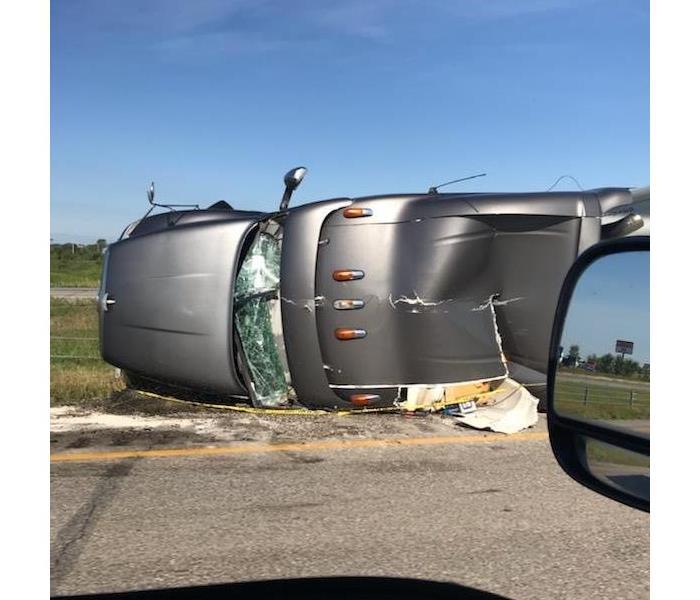 Our team out helping the damages that struck Iowa!
Our team out helping the damages that struck Iowa!
Over the past couple weeks, our storm team here at LaGrange Park/N. Riverside has been out assisting those who were hit with damage from the bad storm that went through Iowa. Our team has been working on a major project at one of the local hotels nearby. Our commercial large loss division is composed of the best of the best in restoration. Our commercial operations manager has been supervising the job every since we started down in Iowa. Our team was about to dispatch trained production professionals, and cut costs through the strategic placement and oversight of temporary labor. Once our team got word there was going to be a major storming rolling through there, we had a team ready to go the day before. After the storm hit, out team drove over 3 hours to get out to the location where the commercial property was. On the way, our team was able to see all the damage first hand driving through Iowa. Our team described it almost as a "scary scene in a movie". There was semi-trucks turned over on the highway, full grown trees pulled out of the ground, entire roofs taken off of homes, broken homes, and many more disasters that put tears to their eyes. Our team knew that they needed to help fix Iowa, and be able to make it strong again. To this very day, our team is still out in Iowa assisting the major commercial loss that has taken place, and they will continue to work in order to get the operation up and going again. We here at SERVPRO are always faster to any size disasters!
Preparing your home for a major storm
9/1/2020 (Permalink)
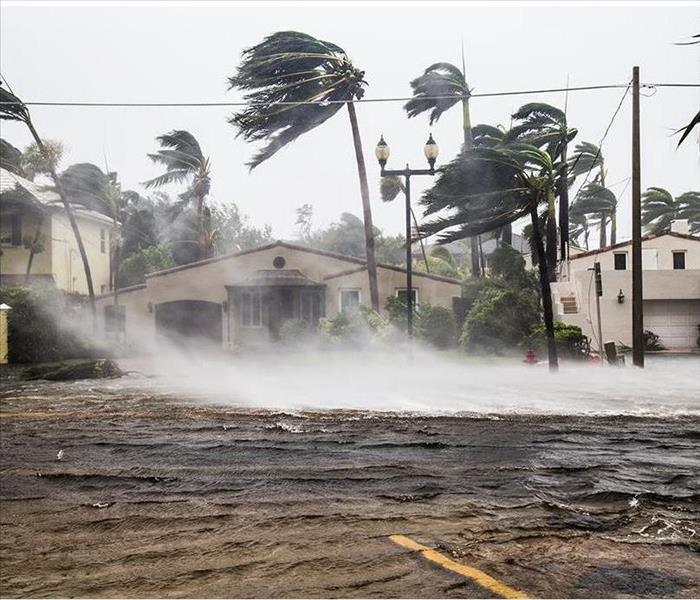 Make sure you have a plan!
Make sure you have a plan!
Being a homeowner, you do not know what mother nature is going to throw at you. Therefore, you always need to be ready. You can take preventative measures to help reduce damage if and when a severe storm hits.
1. Clear limbs and trim trees
- During a storm, dead tree limbs can get loose and cause damage to a home's exterior or even puncture a window. Heavy rain can also cause trees with shallow root systems to pull out of the ground.
2. Secure fences
- Ensure that your fences are properly secured to help prevent them from being lifted up and thrown against the house by heavy winds.
3. Secure furniture
- Heavy winds can cause items like patio furniture and large toys to damage the exterior of your home. It's a good idea to anchor outdoor furniture or bring it indoors before a storm hits. You should also move anything in your yard that can become flying debris inside your house or garage.
4. Check gutters
- Help prevent damage inside your house by having downspouts drain away from your home and clear your gutters of any debris.
5. Protect the critical areas
- Wind is a major threat to your roof, windows, doors and garage doors. Either you or a building contractor can build and install temporary protection, such as approved wind shutters or plywood on windows and coverings for patio and entry doors, strengthen and stiffen garage doors, and install heavy duty door hardware.
6. Protect your valuables
- Protect mementos in waterproof containers and/or take the items with you if you evacuate. Inventory valuables and contents in the home with pictures or video. Note the approximate value of each item and the date of purchase. You can also send an inventory to a family member outside your region for safekeeping. Also, make sure important documents, such as an insurance policy or mortgage papers, are stored in a safe deposit or fire safe box.
7. Stock a basic emergency kit
- A true emergency can leave you without basic services, including electricity, water, gas or sewage, for a few hours or a few days. Stock your family's emergency kit with enough food, water and supplies to carry all of you through at least three days. Also make sure to restock your kit once the emergency has passed.
8. Create a family emergency plan
- Staying connected is of the utmost importance during an emergency. Designate an out-of-town family member or friend to be your check-in person in case local phone lines are down. Make sure every member of your family knows that contact's number and has a way to reach him or her. Ideally a cell phone and charger or a prepaid calling card. Also, choose a local place where your family members should meet if they are separated when an emergency strikes and your home is unsafe. This might be a landmark or even a parent's workplace.
Common Causes of Sewer Backups and How To Avoid Them
11/12/2019 (Permalink)
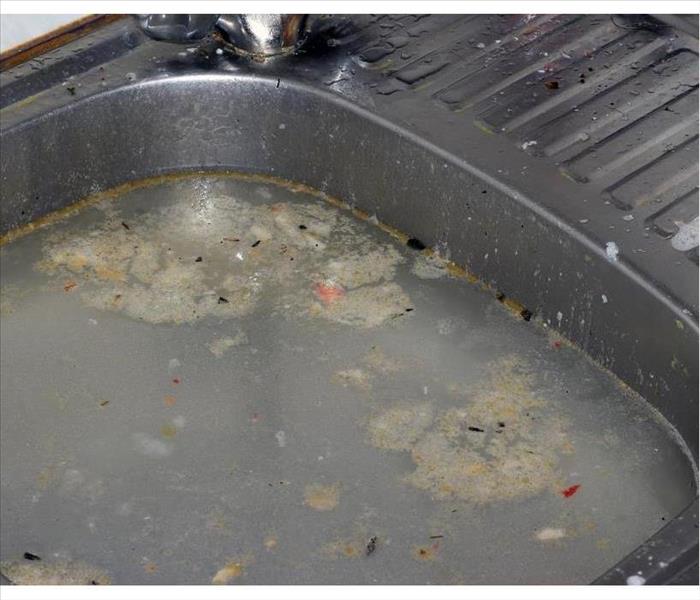 Clogged sink in a Hillside, IL home
Clogged sink in a Hillside, IL home
The 3 most Frequently Observed Sewage Problems
Nobody wants to come home to discover that there has been a sewer backup in his or her living space. Unfortunately, this can easily become a reality for many homeowners. Read on to understand the three most frequently observed sewage problems and what you can do to prevent them from taking place in your Hillside, IL, home.
Clogged Drains
More severe clogs usually take place in the main sewer line, while less serious ones tend to affect your drain. To determine whether there’s a clog in one of your drains, look for blockages in the following fixtures:
To stop these fixtures from becoming clogged, be sure to maintain them on a regular basis and use them appropriately. Pouring grease down your kitchen sink drain or overloading your garbage disposal can increase the risk of a sewer backup. Similarly, avoid flushing sanitary napkins and other bulky items down the toilet to keep all drains clear.
Collapsed Sewer Lines
In some cases, broken or collapsed sewer lines can lead to a sewer blockage. This typically takes place in older homes where the sewer lines are made of clay piping or cast iron, which are materials that tend to break down more quickly. If your sewer line has broken down or collapsed, you may want to consider replacing it with one made of plastic or a similarly reliable material to keep further problems from occurring.
Invasive Tree Roots
If your sewer backup isn’t a result of the above causes, you may want to inspect the tree roots on your property. Trees that are located directly above your sewer line can either crush the sewer line completely or extend into your pipes to form holes and clogs. Be sure to control the growth of your tree roots to keep sewer problems at bay.
Whether you have a bathtub backup or flooding, sewage problems can be serious. Call water damage experts immediately to take care of any kind of emergency.
Take Steps To Prevent Weather Related Flooding in Your Building
10/26/2019 (Permalink)
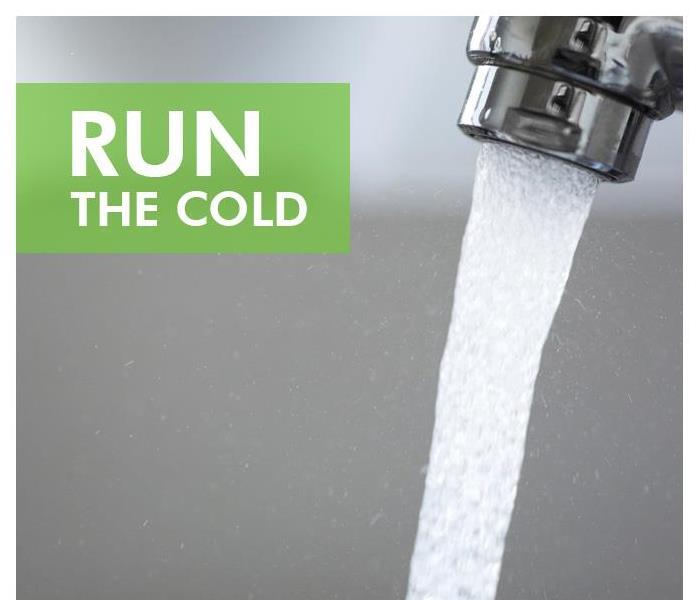 Keep faucets running at a trickle to keep water moving and prevent freezing
Keep faucets running at a trickle to keep water moving and prevent freezing
Take Steps To Prevent Weather Related Flooding in Your Building
When you run a business in Franklin Park, IL, you have a lot of line items to be concerned with. Flood damage does not need to be one of them. Severe storms can cause street level flooding or may cause water to back up in sewer drains. Heavy rain or hail can take a toll on your roof and allow leaks that work their way inside. Extreme cold may cause a burst pipe that could flood anywhere in the building.
An Ounce of Prevention
Storm damage can happen when a frozen pipe develops. Take a few steps to check your building’s risk or and even prevent weather related freezing. A little preparation may spare you from serious storm cleanup.
Check insulation levels in areas where plumbing is installed, both in the walls and in the roof/ceilings. If more is needed for your climate than is present, have more installed and consider insulated pipe sleeves for extra protection
Keep the area surrounding any plumbed areas warm enough to prevent freezing, or use heat tape in areas beneath the floors or in the ceiling
Keep faucets running at a trickle to keep water moving and prevent freezing
If needed, relocate problematic pipes from outer walls to prevent freezing
Close garage and bay doors when they are not being used to keep heat in
Thawing a Frozen Pipe
If you suspect a pipe is frozen, it is very important that you don’t turn the water on too quickly. If it doesn’t run easily, keep the faucet partially open and warm the area where the pipe is located until water flows freely. Allow water to run for a bit to melt ice and open lines.
When a burst pipe leaves you with standing water, be sure to call a professional water remediation service in Franklin Park, IL to help with proper flood cleanup and drying out. With some good prevention and skilled help, you can get back to business as usual.
How Storm Damage Creates Basement Flooding
9/10/2019 (Permalink)
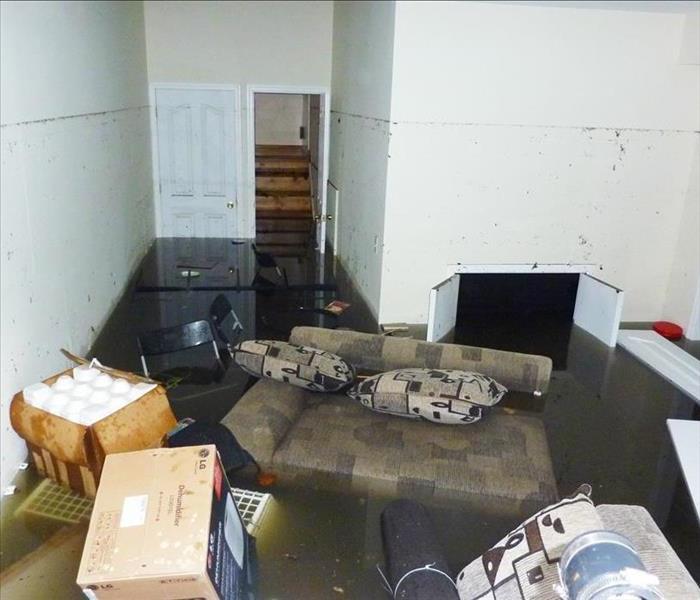 Flooded basement in Stone Park, IL
Flooded basement in Stone Park, IL
An intense storm can have a devastating impact on your Stone Park, IL, home. Sometimes, that aftermath is a flooded basement. Learning the causes behind such an incident can make the cleaning and restoration processes easier and help you prevent any further backups.
What Causes a Basement Flood?
Due to the position and structure of your residence’s basement, it is vulnerable to several types of flooding. Most of these floods manifest after heavy storms and rain, and they are usually caused by the following reasons:
- Sewer water buildup caused by clogging (waste, trash, roots, vandalism, etc.)
- Storm water backing up due to outdated drain design
- Excessive surface water caused by landscape slopes or blocked gutters
- Broken or defective pipes
- Extra groundwater from hydrostatic pressure
It is imperative to find the specific cause of a flooded basement as soon as possible. Finding the source will make it easier to call a professional to fix the problem and prevent further damage. Additionally, the less water you have in the basement, the easier it will be to clean up.
How Should You Handle a Sewage Backup?
Now that you have located and controlled the source of the flooding, it is time to clean the basement. First, immediately call utility companies such as your gas company and your electricity provider, since having these services active right now is potentially dangerous. Then, assess as much of the damage as possible. Finally, contact a storm damage restoration company and provide its employees with the assessed information. They can safely repair the damage to the basement in a safe and prompt manner.
A severe storm can reveal weaknesses in your home’s sewer system that can also leave behind a flooded basement. Even though this event can be overwhelming, taking quick action by identifying the source of the problem, recording the damage and contacting restoration professionals will stop the problem and return the basement to a safer, cleaner state.
The FEMA Recommendations for Flood Preparation
8/26/2019 (Permalink)
Major storms can leave your Bensenville, IL, home in bad shape, and you may expect that flood insurance will keep you covered. However, sitting back and waiting for the insurance adjuster to get back to you with good news could be a big mistake.
After a natural disaster or huge storm, adjusters are often busy with several homes. You could be waiting for a long time before the professional reaches your home.
While waiting, flood damage will get worse. As water seeps into the walls and floors of your home, mold has time to get established and spread throughout the home. Many flood remediation and home repair companies work directly with insurance companies. Waiting for an insurance adjuster could increase the costs of repair to your home. Take action right away to get the repair work started.
Hire a Public Adjuster
One step to consider taking is hiring a public adjuster. The adjuster sent by your insurance company represents the insurance company's best interests. A public adjuster works for your best interests. The work done by this professional may speed up the claim process with your flood insurance company and make sure you get as much coverage as possible.
Decide Whether To File a Claim
Sometimes people avoid filing claims if they believe that their premiums will increase as a result. In this case, homeowners may proceed to do repairs on their own without even involving the adjuster. However, if further damages occur as a result of that inaction, insurance coverage may no longer be effective. It's true that a "claims free" discount could be lost, but contacting the adjuster is a good way to determine whether to file the actual claim or not.
Get Started on Repairs
You can get a lot of work done while you're waiting for the adjuster from your flood insurance company to show up. Don't wait to contact repair and reconstruction professionals to avoid mold damage. Reach out to a public adjuster to represent you.
When to Use Commercial Flood Insurance
8/20/2019 (Permalink)
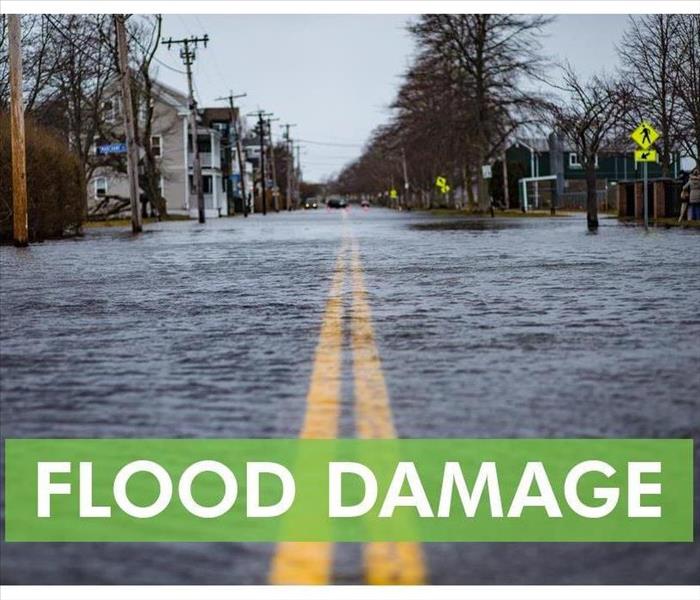 Flood insurance will be needed if your building is flooded due to storm surges
Flood insurance will be needed if your building is flooded due to storm surges
Flood insurance is something that every business owner should consider purchasing for their Berkeley, IL commercial property. An insurance plan that just focuses on restoring damage caused by a flood can literally save your business from having to close its doors after a devastating storm or other causes of floods.
Definition
As the name implies, flood insurance provides financial protection to your business if a flood occurs and damages your building. A flood is defined as an event that affects an extensive area, usually two acres or at least two buildings. Most often, flood insurance will be needed if your building is flooded due to one of the below causes:
- Storms and extreme weather: Heavy rains, snow melt, and storm surges
- Other acts of nature: Overflowing rivers and storm surges are often the result of a major storm, but regardless of the cause an overflowing natural body of water can cause devastating floods
- Man-made disasters: Broken levees and dams can also be devastating to nearby areas and have been known to strike without warning
Coverage
Remember that flood insurance will only cover your flood damage if the root cause is from an event outside of your particular building that affects more than just your space. If, for example, your building is flooded due to a burst pipe inside your own walls, you should turn to your general commercial insurance plan. Once it is determined that your building has been damaged by a flood, your insurance company will work with you to cover costs associated with the cleanup and restoration process. The overarching goal is to receive financial help that will get your business back to its previous operational state. A business is not required to purchase insurance specific to a flood unless it is located in a flood zone and is part of the mortgage requirements. However, a flooding catastrophe can happen anywhere at any time, so protecting your building against a flood can save your business from potential bankruptcy.
The FEMA Recommendations for Flood Preparation
8/12/2019 (Permalink)
Some buildings are more at risk of flooding than others in Elmhurst, IL. The Federal Emergency Management Agency, or FEMA, aims to prepare every individual to handle any natural disaster that might affect him or her, and floods are no exception. There is a wealth of flood preparation knowledge you can find from this agency, including a flood risk map that shows you exactly how likely your home is to be affected by a flood. You should take the time to learn:
1. Which flood zone your home is located in
2. What flood insurance options you have
3. Where you fall on the flood insurance rate map or FIRM
4. The elevation of your property
5.What the evacuation plan is for your area
Flood Insurance
It is a good idea to have water damage covered by your insurance policy, but you may not realize that water damage and flooding damage is not the same thing. Water damage is caused by things like burst pipes or leaky roofs, but the damage caused by external factors like tidal waves or mudslides fall into a different category. Most people do not need flooding insurance, but if you are in a high-risk area, it might be beneficial. The National Flood Insurance Program, or FEMA NFIP, is a special program FEMA offers that provides affordable flooding damage insurance.
What To Do
FEMA also has recommendations for what to do during a flood. You should be intimately familiar with the evacuation plan in your area and have all the supplies you need before a flood happens. You should have plenty of canned food, bottled water, a first aid kit, and general tools. It might be good to have a flooding damage restoration company in Elmhurst, IL already in mind so you can start the process of repairing as soon as possible. Flood water contains contamination, so it is not safe to return to your home no matter how minor the damage is.
What To Know About Sewage Backup Mitigation
7/17/2019 (Permalink)
 Consider the installation of a sump pump
Consider the installation of a sump pump
Protect Your Home Against Sewer Problems
If you're worried about sewage backup in your, Elmhurst, IL, home then you may be wondering what mitigation steps you can take to keep your property safe. Here are three things you can do to help protect your residence against potential sewer problems after a heavy storm.
1. Know The Risk in Your Area
When preparing your home against storm damage, it's important to know the risk level of your property. Keep track of storms in the area, know where your property is situated on the local watershed, and have an idea of the likelihood of sewer issues in your area. These things will help you have an idea of what the best mitigation measures are for your home.
2. Take Precautions Before a Storm Arrives
Before backup flooding occurs, there are some steps you can take. You may want to have a floor drain plug or standpipe installed in basement areas, or consider the installation of a sump pump. It's also a good idea to have your sewage system inspected regularly to ensure that everything is functioning correctly before an issue arises.
3. Be Prepared for a Cleanup
Even with the best precautions it's still possible for sewer damage to occur to you home. As such you may want to have a plan in place to take care of any sewer cleaning up that may be required. Have the number for a restoration service on hand, know where the water turn off valve and your electric box are located in your home so that these can be shut down in the event of an emergency, and have access to proper safety gear such as goggles and gloves.
When preparing your home against sewer backup it's important to know what the risk factor of your area is. Knowing this can allow you to take the proper precautions before a storm even occurs. You may also want to have a plan prepared in case these precautions can't protect your property 100 percent. If you have any questions your local restoration team may be able to help.
4 Costly Ways Hail Can Damage Your Business
7/12/2019 (Permalink)
If your business in Elmhurst, IL, is hit by a hailstorm, you might feel overwhelmed with the amount of hail damage your building has experienced. Roof damage is the most common harm caused by hail, which can lead to water entering your business or even compromising its structure. Fortunately, a storm damage restoration company has the equipment and expertise necessary to prevent any more damage from occurring and get your business looking like new. Here are four common types of hail damage that a restoration company can help repair.
1. Roof Damage
Roofing materials are often not designed to handle the impact of especially large hailstones and can experience extensive damage as a result. Any time your business is hit by hail, it is essential to hire a roof inspector or check for missing shingles or any other roof damage that may have occurred.
2. Mounted Equipment and Skylight Damage
Roof-mounted equipment including HVAC equipment, turbines, solar panels, and satellite dishes are often damaged by hail. Investing in hail guards can help mitigate this damage. Additionally, skylights may crack or shatter if hit by hail, which leaves the interior of your business exposed to the elements.
3. Landscape Damage
Trees, plants, and other additions to your business’s landscape can be harmed from hail. Trees are especially dangerous in a hailstorm because the weight of the hail combined with strong winds can cause trees to fall over or branches to fall off onto your building.
3. Window Damage
If hail falls at an angle or bounces off another surface, it can hit your windows and cause them to crack or completely shatter. This can also happen to glass doors.
Hail damage can be extremely harmful to your building’s business and cause damage to several different parts of your building. Calling a restoration company is the best way to quickly repair your business before even more costly damage occurs.




 24/7 Emergency Service
24/7 Emergency Service














